Planning a family vacation with dogs doesn’t mean compromising on adventure or relaxation.
With 38% of U.S. households owning dogs and travel spending reaching record highs, pet-friendly travel has exploded into a $2.4 billion industry.
Whether you’re dreaming of dog-friendly beach vacations or exploring dog-centric vacations in the mountains, this comprehensive guide ensures your furry family member enjoys every moment of your getaway.
Table of Contents
- Planning Your Dog-Friendly Vacation
- Preparing Your Dog for Travel
- Road Trip Adventures with Dogs
- Flying with Your Four-Legged Friend
- Choosing Dog-Friendly Vacation Resorts
- Beach Vacations with Dogs
- Vacation with Puppy: Special Considerations
- Dog-Centric Vacation Activities
- Accommodation Essentials
- Safety and Health on the Road
- Packing Like a Pro
- Managing Travel Anxiety
- International Travel with Dogs
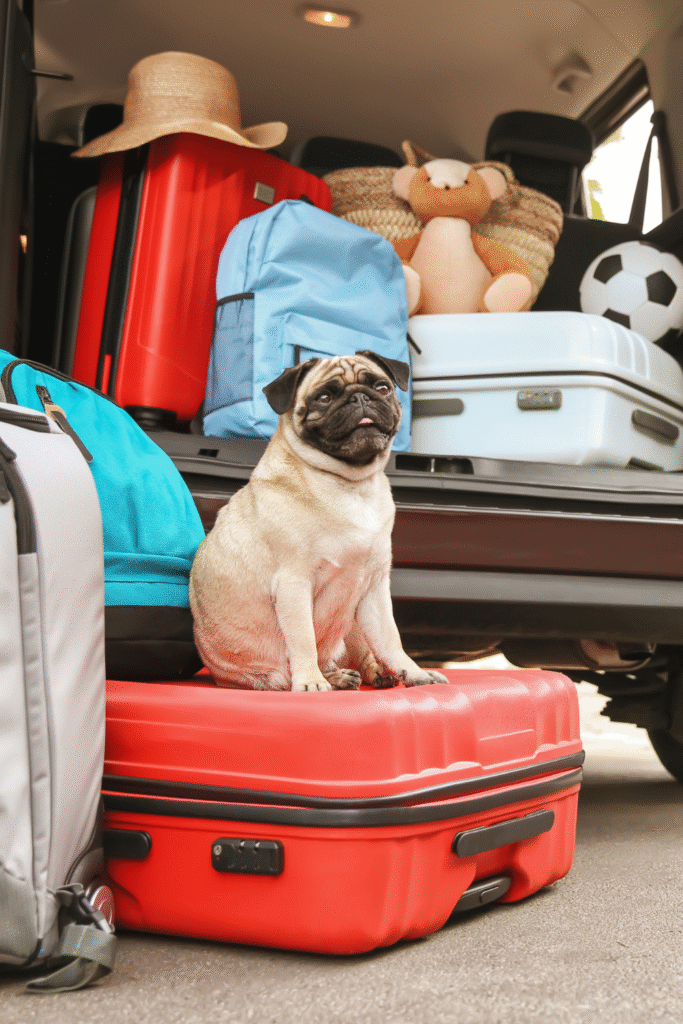
Planning Your Dog-Friendly Vacation
When planning a dog-friendly vacation, careful preparation is key to ensuring a smooth and enjoyable experience for both you and your furry companion.
Start by researching destinations that welcome pets, including dog-friendly beaches, parks, and trails.
Consider your dog’s personality and needs when selecting activities and accommodations, as some pets may prefer quieter environments over bustling tourist spots.
Additionally, make sure to check local laws and regulations regarding pets to avoid any unexpected challenges during your trip.
Start planning your dog-friendly getaway 3-4 months ahead. Research your destination’s pet policies, climate, and available veterinary services.
Consider your dog’s personality, age, and physical limitations when selecting activities.
Key planning steps:
- Verify vaccination requirements for your destination
- Book pet-friendly accommodations early (they fill up 40% faster than standard rooms)
- Research local dog parks, beaches, and hiking trails
- Identify emergency veterinary clinics at your destination
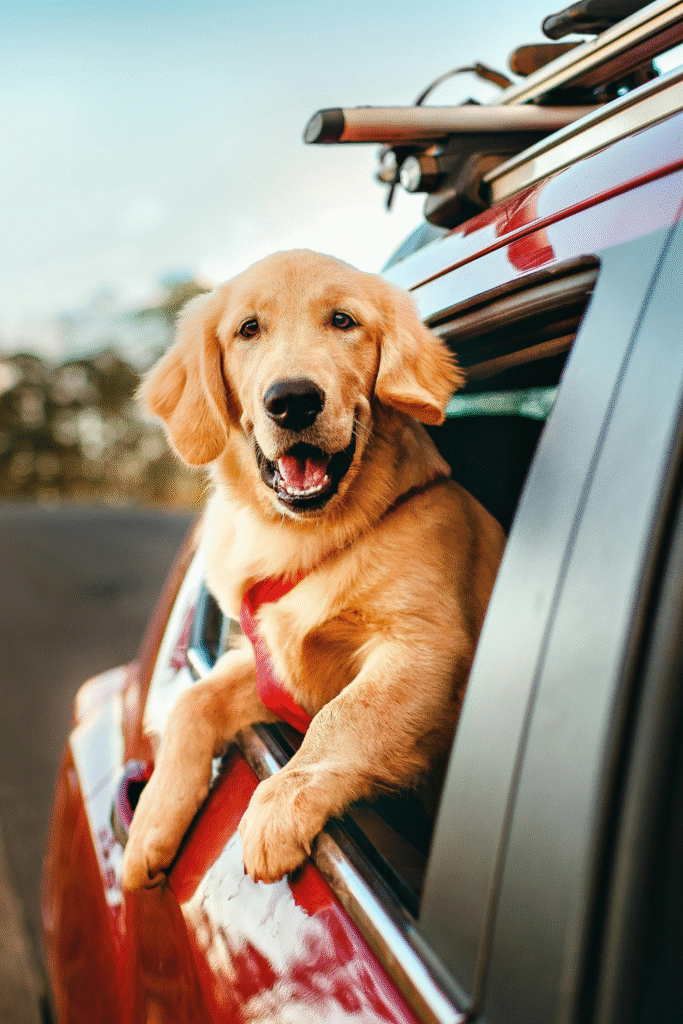
Preparing Your Dog for Travel
Start by acclimating your dog to travel by taking them on short car rides or introducing them to their travel crate well in advance.
Make sure to pack their essentials, including food, water, medications, and favorite toys to keep them comfortable during the trip.
Familiar scents can help reduce anxiety, so consider bringing a blanket or item from home.
Additionally, consult your veterinarian to ensure your dog is healthy enough for travel and address any concerns about motion sickness or stress.
Travel preparation extends beyond packing. Start conditioning your dog for the journey weeks before departure.
Pre-travel conditioning:
- Take short car rides to build tolerance
- Practice sleeping in new environments
- Ensure all vaccinations are current
- Schedule a pre-travel vet checkup
- Update ID tags with your cell phone number
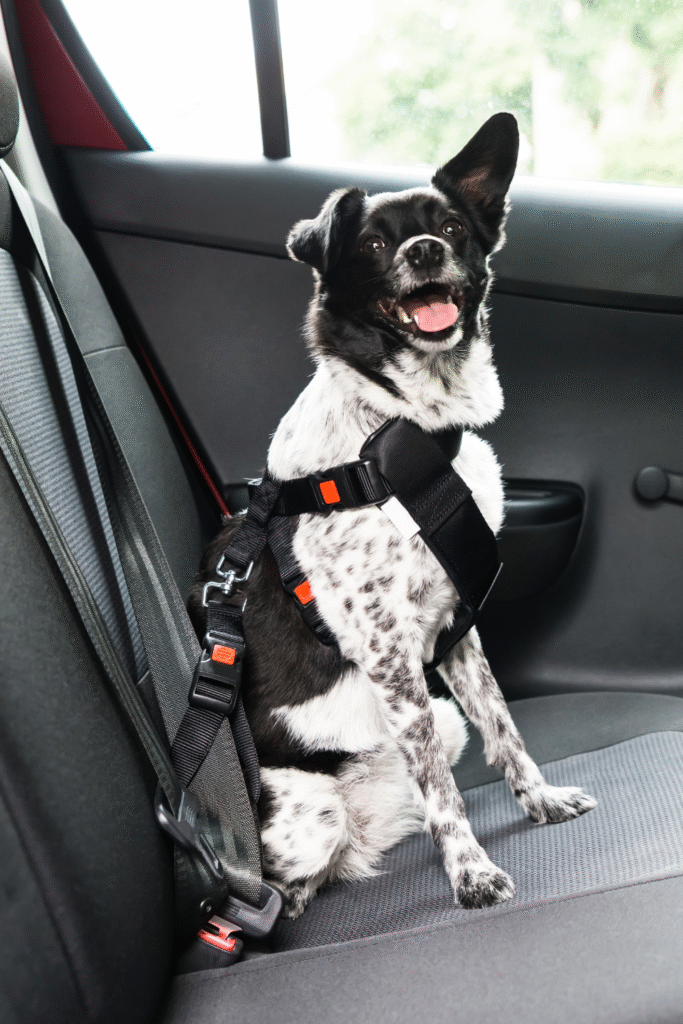
Road Trip Adventures with Dogs
Road trips with dogs can be a wonderful opportunity to bond and explore new places together.
To ensure a smooth experience, plan frequent stops for bathroom breaks and to give your dog a chance to stretch their legs.
Always bring plenty of fresh water, a collapsible bowl, and your dog’s favorite snacks to keep them hydrated and content during the drive.
Maintaining a familiar routine, such as feeding and walking schedules, helps reduce stress for your pet.
Lastly, secure your dog with a seatbelt harness or carrier to keep them safe while on the road.
Road trips offer the most flexibility for family vacation with dogs. Your pup can stop frequently, stretch their legs, and avoid the stress of airport security.
Essential road trip tips:
- Never leave your dog alone in a parked car (temperatures can rise 20°F in 10 minutes)
- Stop every 2-3 hours for bathroom breaks and exercise
- Secure your dog with a crash-tested harness or travel crate
- Pack plenty of fresh water and familiar food
- Research dog-friendly stops along your route
Route planning apps like BringFido help locate pet-friendly restaurants, hotels, and attractions along your journey.
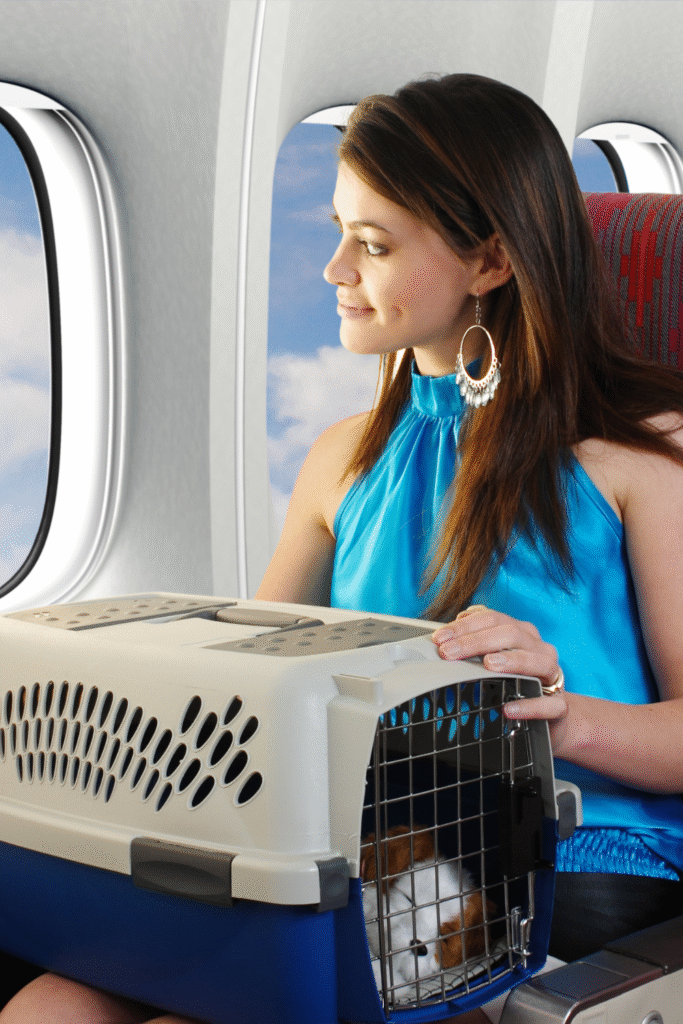
Flying with Your Four-Legged Friend
Flying with your pet requires careful preparation to ensure a safe and stress-free experience. Start by checking your airline’s pet policy, as rules and restrictions vary between carriers. Make sure your dog’s travel crate meets airline requirements for size and ventilation. It’s also important to visit the veterinarian beforehand to confirm your pet is healthy for travel and has the necessary documentation, such as health certificates or vaccination records. Lastly, consider booking a direct flight to minimize travel time and reduce stress for your furry companion.
Air travel requires more preparation but opens doors to distant destinations. Airlines transported over 500,000 pets in 2023, with incident rates below 0.1%.
Pre-flight essentials:
- Book well in advance (most airlines limit 4-6 pets per flight)
- Choose direct flights when possible
- Avoid peak travel seasons and extremely hot days
- Arrive at the airport 2 hours early for domestic flights
In-cabin vs. cargo considerations:
- Dogs under 20 pounds (including carrier) typically qualify for in-cabin travel
- Cargo is climate-controlled but more stressful for anxious dogs
- Service dogs fly free in the cabin regardless of size
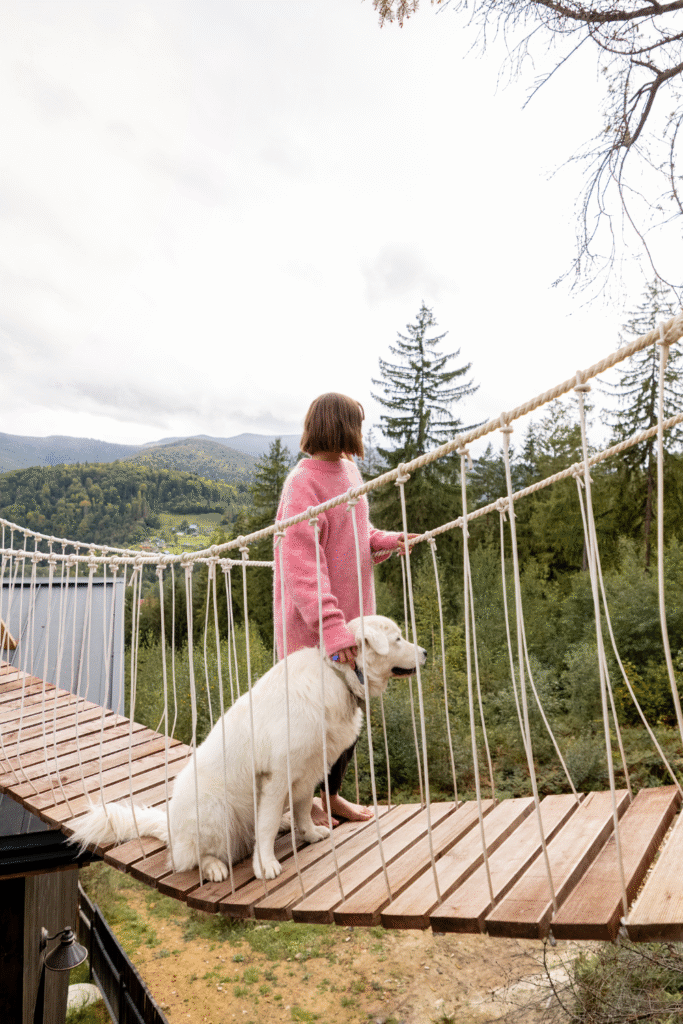
Choosing Dog-Friendly Vacation Resorts
Dog-friendly vacation resorts have evolved far beyond simply allowing pets. Premium properties now offer doggy spas, room service menus for pets, and dedicated play areas.
These resorts prioritize the comfort and happiness of both pets and their owners, ensuring a seamless vacation experience. Many even provide pet-sitting services, giving owners the freedom to explore while their dogs are cared for. Additionally, some resorts include amenities like complimentary pet welcome kits filled with treats and toys. With these thoughtful touches, dog-friendly vacation resorts are increasingly catering to the needs of furry family members.
What to look for:
- On-site dog runs or exercise areas
- Pet sitting services
- Welcome amenities (treats, bowls, beds)
- No size or breed restrictions
- Reasonable pet fees (average $25-75 per night)
Top resort chains for dogs:
- Kimpton Hotels (no size limits, no fees)
- La Quinta Inns (pets stay free)
- Four Seasons (luxury pet amenities)
- Red Roof Inn (one well-behaved pet per room, free)

Beach Vacations with Dogs
Dog-friendly beach vacations rank among the most popular pet travel experiences. Beaches provide natural exercise, socialization, and sensory stimulation for dogs.
However, not all beaches are dog-friendly, so it’s important to research locations that specifically welcome pets. Many beaches have designated off-leash areas where dogs can run and play freely. Always ensure you bring essentials like fresh water, waste bags, and sun protection for your pet’s safety. Planning ahead will ensure a fun and stress-free beach day for both you and your furry companion.
Beach safety essentials:
- Check local leash laws and seasonal restrictions
- Bring fresh water (saltwater causes dehydration)
- Protect paw pads from hot sand
- Rinse your dog after swimming to remove salt and sand
- Monitor for signs of overheating or exhaustion
Top dog-friendly beach destinations:
- Huntington Dog Beach, California
- Fort De Soto Park, Florida
- Cape Henlopen State Park, Delaware
- Carmel Beach, California

Vacation with Puppy: Special Considerations
When planning a vacation with your puppy, it’s essential to consider their comfort and needs throughout the trip.
Ensure that your accommodations are pet-friendly and provide a safe space for your dog to rest.
Pack all necessary supplies, including food, water, bedding, and any medications your dog might need.
Remember to check the weather conditions at your destination and adjust your plans accordingly to keep your puppy safe and comfortable.
Always prioritize their well-being by scheduling regular breaks during travel and avoiding environments that may be too stressful or overwhelming.
A vacation with puppy requires extra attention to health, safety, and comfort. Puppies under 16 weeks have developing immune systems and need additional protection.
Puppy-specific tips:
- Wait until 2 weeks after final vaccinations before traveling
- Bring familiar blankets and toys for comfort
- Pack extra food (travel can upset sensitive stomachs)
- Plan shorter travel days with frequent breaks
- Research puppy-friendly activities (avoid crowded dog parks)
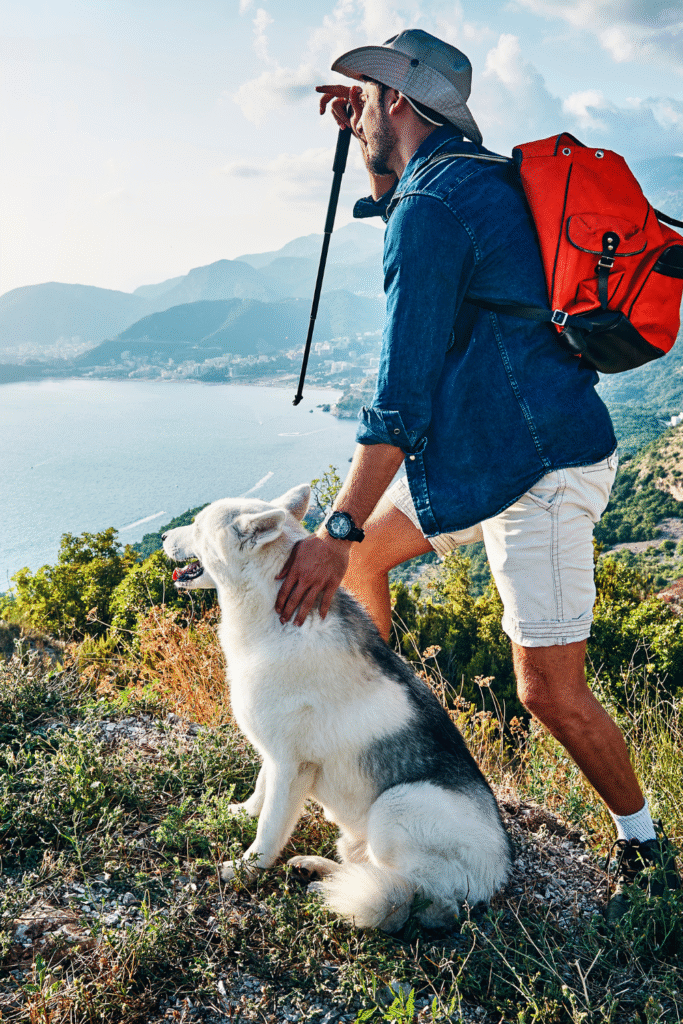
Dog-Centric Vacation Activities
Planning a dog-centric vacation involves selecting activities that both you and your furry companion can enjoy together.
Outdoor adventures such as hiking on pet-friendly trails, exploring dog-friendly beaches, or camping under the stars can create unforgettable memories.
Many cities also offer dog-friendly dining options, making it easy to include your pup in mealtime plans.
Additionally, consider visiting pet-friendly attractions like parks, botanical gardens, or even dog-centered events to ensure your pup feels included every step of the way.
Dog-centric vacations focus entirely on activities both you and your pup will love. These experiences create stronger bonds and unforgettable memories.
Popular dog-centric activities:
- Hiking and nature trails
- Dog-friendly wineries and breweries
- Agility courses and training camps
- Beach days and lake swimming
- Urban exploration walks
- Camping and glamping
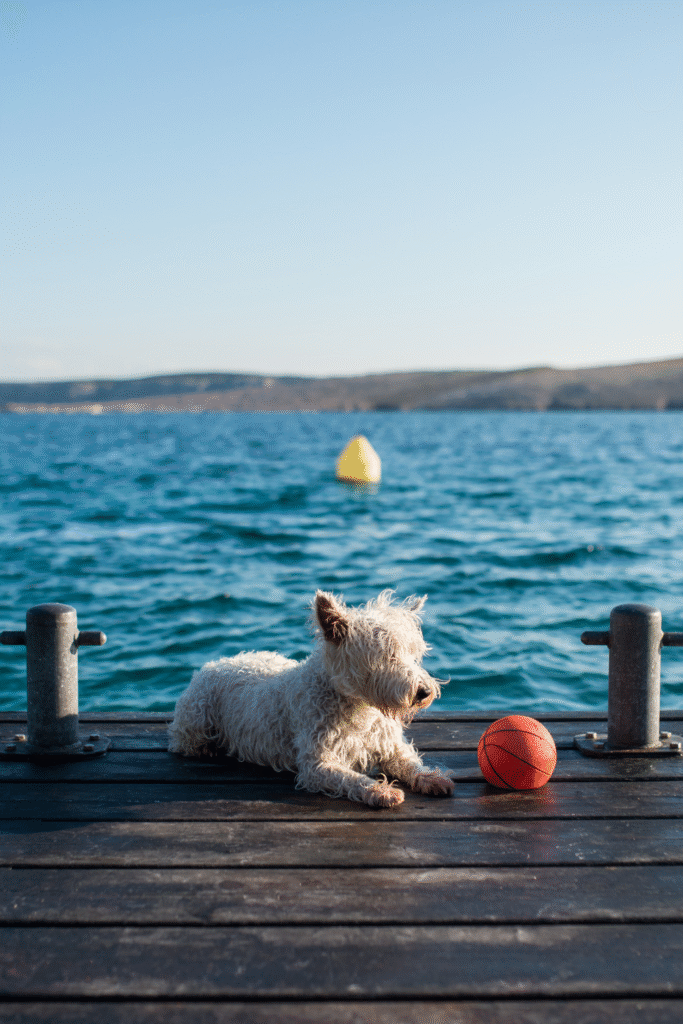
Accommodation Essentials
When choosing accommodations for your dog-centric vacation, it’s important to prioritize pet-friendly options that cater to both your needs and your pup’s comfort.
Look for places that offer amenities such as dog beds, bowls, and even fenced-in areas for off-leash play.
Proximity to dog-friendly attractions, walking trails, or parks can also enhance your travel experience.
Additionally, ensure that the accommodation policy allows pets and inquire about any breed or size restrictions in advance.
Beyond hotels, consider vacation rentals, cabins, and camping for more space and flexibility. Vacation rental properties often welcome pets for lower fees than hotels.
Accommodation checklist:
- Fenced yard or balcony access
- Easy-to-clean flooring
- Nearby walking areas
- Proximity to emergency vet services
- Clear pet policies and restrictions
| Accommodation Type | Average Pet Fee | Pros | Cons |
|---|---|---|---|
| Vacation Rental | $50-150 total | More space, yards, kitchen | Less services, cleaning responsibility |
| Hotel Chain | $25-75/night | Daily housekeeping, amenities | Size limits, restricted areas |
| Boutique Hotel | $50-200/night | Luxury pet services, personalized care | Higher costs, limited availability |
| Camping/RV | $5-25/night | Outdoor access, budget-friendly | Weather dependent, basic facilities |

Safety and Health on the Road
When traveling with pets, their safety and health should be a top priority.
Always ensure your pet is secured in a carrier or with a harness while on the road to prevent accidents.
Pack a travel kit that includes food, water, medications, and any comfort items like blankets or toys.
Schedule regular breaks during long journeys to allow your pet to stretch, relieve themselves, and stay comfortable.
Additionally, research local veterinarians or emergency services along your route in case of unexpected health issues.
Travel exposes dogs to new environments, foods, and stressors. Preparation prevents emergencies and ensures everyone enjoys the trip.
Health and safety priorities:
- Carry a pet first aid kit
- Bring a 7-day supply of medications
- Keep vaccination records accessible
- Research 24-hour emergency vets at your destination
- Consider pet travel insurance for extensive trips
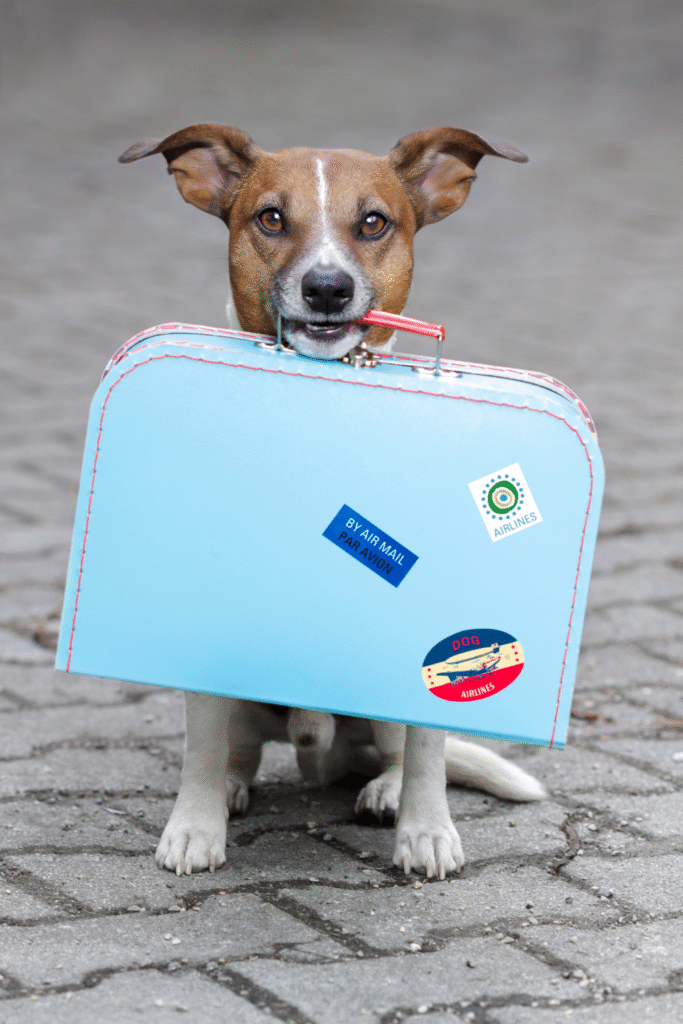
Packing Like a Pro
Packing for your dog requires careful planning to ensure their comfort and needs are met during the trip.
Start by packing enough food and treats to last the entire duration of your travels, along with collapsible bowls for easy feeding and hydration.
Don’t forget to include familiar items like their favorite toys or a blanket, as these can help reduce stress in unfamiliar environments.
Additionally, pack waste bags, grooming supplies, and any necessary leashes or harnesses to ensure you are prepared for various situations.
Efficient packing ensures you have everything needed without overpacking. Create a checklist and pack 2-3 days before departure.
Essential packing categories:
- Health: Medications, vaccination records, first aid kit
- Comfort: Bed, favorite toys, familiar blankets
- Safety: Leash, collar with ID, car harness
- Feeding: Food, treats, bowls, can opener
- Cleanup: Waste bags, cleaning supplies, paper towels

Managing Travel Anxiety
Travel anxiety in pets can be challenging, but there are ways to ease their stress.
Gradual exposure to car rides or the travel environment can help them adjust over time.
Bringing along familiar items, like their favorite toy or blanket, creates a sense of comfort and security.
Additionally, maintaining a calm demeanor and using soothing tones can reassure your pet during the trip. For severe anxiety, consulting your veterinarian for advice or medication recommendations may be necessary.
Travel anxiety affects 30% of dogs, ranging from mild nervousness to severe panic.
Early intervention and gradual conditioning reduce stress significantly.
Anxiety management strategies:
- Practice car rides weeks before travel
- Use calming pheromone sprays or diffusers
- Maintain normal feeding schedules when possible
- Consider anxiety wraps or calming supplements
- Consult your vet about anti-anxiety medications for severe cases
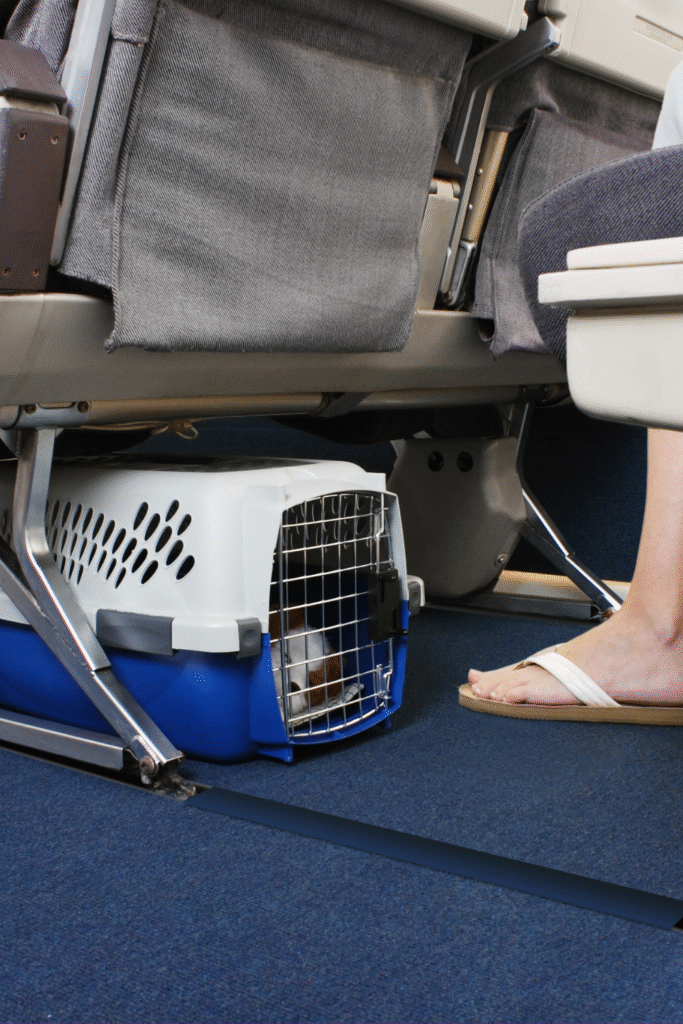
International Travel with Dogs
Traveling internationally with dogs requires careful planning and adherence to regulations.
Start by researching the pet import requirements of your destination, as these vary by country.
Ensure your dog is up-to-date on vaccinations, including rabies, and obtain the necessary health certificates from a licensed veterinarian.
Microchipping your pet is often mandatory and helps ensure their identification.
Additionally, prepare for the journey by choosing a comfortable and airline-approved travel crate to keep your dog safe during transportation.
International travel requires extensive planning, health certificates, and quarantine considerations. Start planning 6 months ahead for complex destinations.
International requirements typically include:
- Health certificates issued within 10 days of travel
- Specific vaccinations and treatments
- Microchip identification
- Import permits for certain countries
- Professional handling of documentation
Frequently Asked Questions
Q1: How early should I start planning a vacation with my dog?
A: Begin planning 3-4 months ahead for domestic travel, 6 months for international destinations. Popular dog-friendly accommodations book quickly.
Q2: Can puppies travel before completing their vaccination series?
A: Wait until 2 weeks after final vaccinations (typically 16-20 weeks old) before traveling to public areas where other dogs have been.
Q3: What’s the maximum time a dog should spend in a car?
A: Adult dogs can handle 8-10 hours with regular breaks every 2-3 hours. Puppies, senior dogs, and anxious dogs need more frequent stops.
Q4: How do I know if my dog is too stressed to continue traveling?
A: Watch for excessive panting, drooling, vomiting, diarrhea, or refusal to eat. If symptoms persist despite breaks and comfort measures, consider shortening your trip.
Q5: Are there dog-friendly alternatives to traditional hotels?
A: Yes! Consider vacation rentals, pet-friendly camping, glamping sites, and even dog-specific hotels that cater entirely to traveling pets.
Q6: What should I do if my dog gets sick while traveling?
A: Contact the nearest emergency veterinary clinic immediately. Keep your regular vet’s contact information and your dog’s medical records easily accessible.
Q7: How much should I budget for a dog-friendly vacation?
A: Add 20-30% to your typical vacation budget for pet fees, special accommodations, dog-friendly activities, and potential emergency veterinary care.
Q8: Can I leave my dog alone in the hotel room?
A: Most hotels prohibit leaving pets unattended. If you must leave briefly, inform hotel staff and consider hiring a local pet sitter or using doggy daycare services.
Final Thought
Traveling with your dog transforms ordinary vacations into extraordinary adventures filled with tail wags and happy memories.
Whether you’re planning dog-friendly beach vacations or exploring dog-centric vacations in the mountains, proper preparation ensures both you and your furry companion have the time of your lives.
Start planning today, and discover why millions of pet parents wouldn’t dream of leaving their four-legged family members behind.
Ready to start planning? Research your destination’s pet policies, book dog-friendly accommodations early, and begin conditioning your pup for travel.
Your next great adventure awaits – with paws and all!
